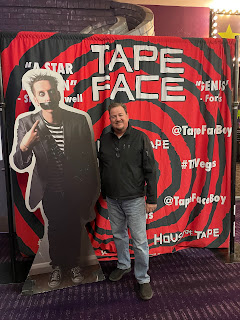Rita. What comes to mind when you hear that name?
Whenever I hear "Rita," my mind automatically defaults to a "lovely" meter maid Sir Paul sang about on Sgt. Pepper's Lonely Hearts Club Band. And quite frankly, I would be happy to be the third wheel (with extended pinkie) at any tea party they enjoyed.
Many an afternoon, after school was over for the day at Kelston Boys' High School, my fingers would skip through used records in Henderson, West Auckland, in search of her and the album she appeared in.
Margarita. What comes to mind when you hear that name?
A drink.
Margarita Carmen Cansino?
Nah, mate—nothing.
You've heard of her: Rita Hayworth.
Oh!!!
Indulge me in some context…
In my apartment complex, there lives a twenty-something young woman who is the spitting image of Rita Hayworth—the hairstyle, hair colour, dresses, forlorn look in her eyes. When we pass each other on the grounds and no one else is around, I wonder if I am in some 1940s time loop. I half expect to see Glenn Ford, her co-star in Gilda, to be in the laundry room attending to his wash.
One day after perfunctory introductory niceties, we had the following exchange:
Do you know you look and dress like Rita Hayworth?
Yeah.
Do you know who she was?
Yeah. An actress.
Have you seen any of her movies?
No, just clips on social media.
In 2022, what draws you to dress and present yourself as she did?
Because I like her fashion better than modern fashion.
How did you discover her?
Instagram.
I am not surprised that this Gen-Z young woman accessed Rita Hayworth through social media. In her heyday as "The" Hollywood "Love Goddess," she was partially accessed on a poster, being the number one pinup model for GIs during World War II. In 1946, her image also appeared on an atomic bomb tested in the Bikini Atoll.
In the multiverse platforms of Facebook, Instagram, Snapchat, Twitter, YouTube—you only have seconds to make an impression. Rita Hayworth made sixty-one films in a career spanning nearly forty years. Who has time to watch all those films? (I will let you do the math.) Although for me personally, Gilda was worth my one-hour, fifty-minute entertainment investment.
As a writer, I am always interested in backstory, so naturally the thought came to mind: How did Margarita Carmen Cansino become Rita Hayworth? One lives on in the public consciousness; the other is long gone from the worldly stage. For Fox Film Corporation she was billed as Rita Carmen. After Harry Cohn of Columbia Pictures suggested that the name sounded too Spanish, Rita’s first husband, Edward Judson, had it changed to Rita Hayworth.
Thankfully today, entertainers embrace their cultural background. No one would change their name to conceal their heritage. Such personal interest has been brilliantly explored by Dr. Henry Louis Gates, Jr. and his extremely popular PBS TV show Finding Your Roots, where he researches and shares the ancestry of the celebrities who appear. Today, it is gender that is much more fluid and changeable.
Part of the reason the film star image "Rita Hayworth" continues to appear in the public's consciousness is through the homage other artists pay in their own works. Virgin du jour, Madonna (or past jour) mentions her in her 1990 hit song "Vogue," specifically her ability to give "good face." Rita also appears in Stephen King's novella Rita Hayworth and Shawshank Redemption (later adapted as the film The Shawshank Redemption). I will let you read the story to see the reason for the inclusion in the title.
For the flesh-and-blood Rita Hayworth who left this world on May 14, 1987, and whose final resting place is the Catholic Holy Cross Cemetery, in Culver City, California, two events struck a chord with me—one psychosocial; the other medical: firstly James Hill, Rita Hayworth's fifth and final husband, notes in Rita Hayworth: A Memoir, "It's amazing how many successful people grow up without having had a youth. If you take those childhood years and have to spend them doing five shows a day in a shabby place like Caliente [Mexico] with a man you have to pretend is your husband but is really your father, it becomes easy to understand why a person might well have a sad, faraway look in her eyes" (pg. 16).
I attended Daddy/Daughter dances as my daughters grew up, but the roles were respected and propriety maintained.
The second is Alzheimer's disease, a condition Rita Hayworth was diagnosed with in 1980. It robbed her of so much in her later years, and ultimately took her life. Her daughter Princess Yasmin Aga Khan founded the Rita Hayworth Gala to raise money to combat the disease.
Perhaps a donation in memory of this great star.
Rita.
Margarita.
Lovely Margarita.
🥝🥝🥝
© 2022









